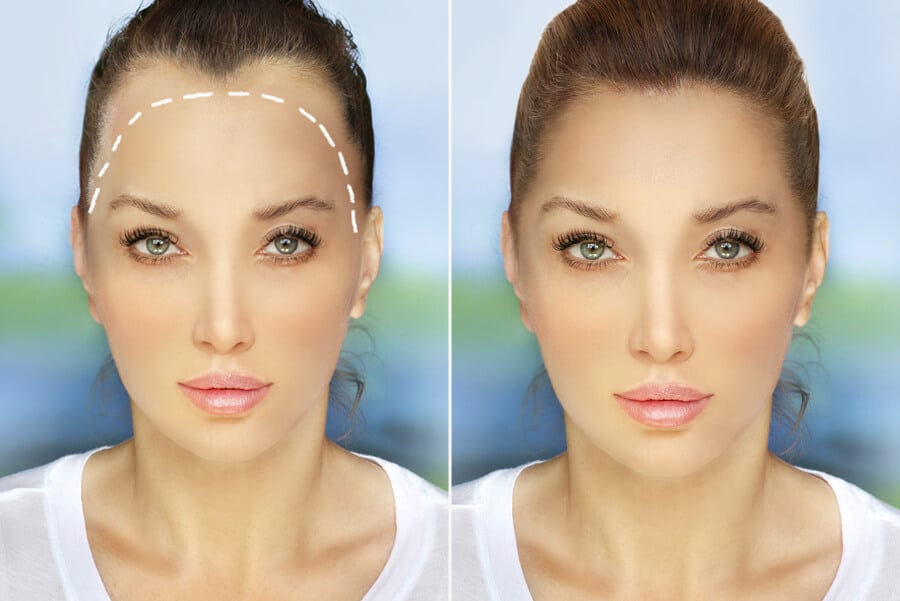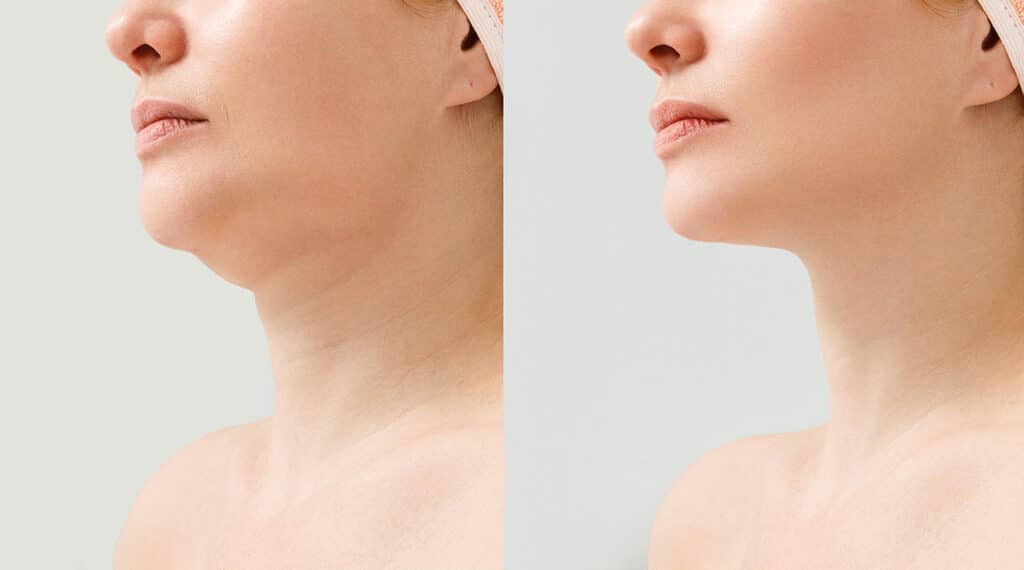Bichectomy, a cosmetic procedure aimed at enhancing facial aesthetics by removing buccal fat pads, has garnered significant attention for its ability to sculpt a more defined facial structure. This surgical intervention is not just about achieving the coveted cheekbone prominence; it’s also intricately linked with boosting self-confidence and aligning one’s external appearance with their internal perception of beauty. As we delve into the nuances of bichectomy, from understanding its implications to evaluating candidacy for the procedure, it becomes clear that this isn’t merely a trend but a potentially life-altering decision rooted in personal aesthetics and well-being.
Bichectomy Overview and Procedure
What is Bichectomy?
Bichectomy is a cosmetic surgery. It removes cheek fat. This aims for a more contoured face.
The procedure targets the buccal fat pad in cheeks. Removing this fat can sharpen facial features. Many seek this surgery for aesthetic reasons.
Surgical Steps
The bichectomy process involves several steps. First, the surgeon makes an incision inside the mouth. This prevents visible scars.
Next, they extract the buccal fat pads carefully. The amount removed varies per person. Finally, they stitch up the incisions with dissolvable sutures.
This surgery usually takes less than an hour under local anesthesia.
Goals Achieved
The primary goal of bichectomy is to enhance facial contours. People desire sharper cheekbones and a slimmer face profile through this surgery.
It’s not just about removing fat but sculpting the face subtly. Results often boost confidence and satisfaction with one’s appearance.
Understanding Buccal Fat Removal
Facial Surgery Comparison
Buccal fat removal stands out among facial surgeries. It specifically targets the buccal fat pads, unlike facelifts or rhinoplasty which focus on skin tightening or reshaping the nose, respectively. This procedure offers a unique approach to refining facial contours by directly removing these fat pads.
Other surgeries may alter appearance temporarily or require repeated treatments. Buccal fat removal, however, promises lasting changes with one procedure. It is crucial for individuals to understand this distinction to make informed decisions about their aesthetic goals.
Role of Buccal Fat Pads
The buccal fat pads play a significant role in facial aesthetics. Located in the middle of the cheeks, they influence face shape and fullness. For some people, large buccal fat pads can lead to a “baby face” appearance or overly rounded cheeks.
Reducing these pads through bichectomy can create more defined cheekbones and angular features. This change often leads to enhanced self-confidence as it aligns one’s external appearance with their desired self-image.
Permanence of Results
One key aspect of buccal fat removal is its permanence. Once removed, these fat cells do not regenerate over time like those affected by diet and exercise might. This means that results are long-lasting and typically do not require additional procedures for maintenance.
It’s important for patients considering this surgery to have realistic expectations about outcomes and be prepared for the permanent nature of changes made during surgery.
Eligibility for Bichectomy Surgery
Candidate Criteria
Understanding who makes a good candidate is crucial. Age and health status play significant roles.
Candidates should be adults, typically over 18. This ensures facial structures have fully matured. Health-wise, individuals must be in good condition. They should not have chronic illnesses that could complicate surgery or healing.
Health Warnings
Certain health conditions can make bichectomy risky.
People with blood clotting disorders are advised against this surgery. The same goes for those with severe diabetes or immune system issues. It’s essential to disclose all health concerns to your surgeon.
Professional Consultation
A consultation is the first step to determine if you’re a fit for bichectomy.
During this meeting, the surgeon will assess your face and medical history. They’ll discuss what you hope to achieve and evaluate if bichectomy can meet those goals.
Preparing for Buccal Fat Removal Surgery
Medication and Smoking
Before undergoing bichectomy, it’s crucial to focus on your health. Your surgeon will likely advise you to stop certain medications. These include blood thinners and anti-inflammatory drugs. They can increase bleeding risks during surgery.
Smoking is another significant concern. It affects healing after surgery by restricting blood flow. Quit smoking at least two weeks before the procedure.
Post-Surgery Care
Arranging post-surgery care is essential for a smooth recovery. You’ll need someone to drive you home after the procedure. This is because you’ll be under anesthesia effects.
Consider having a friend or family member stay with you for the first 24 hours. They can help manage your initial discomfort and ensure your safety.
Pre-Operative Evaluations
Undergoing pre-operative tests ensures your readiness for surgery. These evaluations might include:
- Blood tests
- Medical history review
- Physical examination
These tests check if there’s any condition that could complicate the surgery or recovery process.
By following these preparation steps, patients set themselves up for a successful buccal fat removal experience. Stopping certain medications and smoking helps reduce surgical risks and promotes healing. Arranging post-surgery care eases recovery worries, ensuring comfort and safety. Lastly, completing pre-operative evaluations confirms fitness for undergoing this procedure aimed at removing excess fat from cheeks.
Recovery Process and Aftercare Tips
Recovery Timeline
The recovery time from a bichectomy varies. Most patients see major improvements within three weeks. Full recovery can take up to three months.
Patients should rest for at least 48 hours after surgery. Swelling peaks around the second day but gradually decreases over the following weeks.
Minimizing Discomfort
To reduce swelling, apply cold packs to your cheeks for the first 48 hours. Avoid strenuous activities for two weeks.
Eating soft foods helps during the initial recovery period. Stay hydrated by drinking plenty of water.
Following Instructions
Adhering to your surgeon’s aftercare instructions is crucial for a smooth recovery. These guidelines are designed specifically for you, based on your surgery and personal health background.
Your surgeon will provide detailed advice on how to care for your surgical site, manage discomfort, and when it’s safe to resume normal activities.
Managing Pain During Recovery
Pain Management
After a bichectomy, managing pain is crucial for a smooth recovery. Patients often experience discomfort, but there are effective ways to reduce it. Communication with your surgeon plays a vital role in this process.
Most patients find relief through prescribed medications. These help control the pain during the first few days post-surgery. It’s important to follow the dosage instructions carefully.
Ice packs can also be beneficial. They not only reduce swelling but help ease pain around the cheeks and jawline. Use ice packs for 20-minute intervals during the first 48 hours after surgery.
Activity Limitation
Limiting certain activities post-bichectomy accelerates healing and reduces pain risks. Here are some guidelines:
- Avoid strenuous work or exercise for at least a week.
- Keep your head elevated when resting to minimize blood flow to the face.
- Refrain from any activity that might stress your jaw, like chewing hard foods.
Patients should expect to return to normal activities gradually over time, usually within ten days to two weeks after surgery. However, always consult with your provider before resuming full activities or using any non-prescribed medications.
Risks and Complications of Bichectomy
Potential Risks
Bichectomy, while popular, carries risks. These include infection, asymmetry, and nerve damage. Each risk can affect recovery and results.
Infections are rare but serious. They require immediate medical attention. Asymmetry means one cheek looks different from the other. It might need corrective surgery. Nerve damage could cause numbness or loss of sensation in the face.
Signs of Complications
Watch for signs needing urgent care after a bichectomy.
These signs include excessive swelling, severe pain, or discharge from the incision sites. Fever is another red flag indicating infection.
If you notice any unusual symptoms, contact your surgeon right away. Early intervention can prevent further complications.
Minimizing Risk
Taking steps before and after surgery reduces risks significantly.
Before surgery:
- Choose a certified plastic surgeon with experience in bichectomies.
- Discuss all medications you’re taking with your doctor.
- Follow all pre-surgery instructions carefully.
After surgery:
- Keep follow-up appointments to monitor healing.
- Maintain good oral hygiene to prevent infections.
- Avoid strenuous activities that may impact recovery.
Following these guidelines helps ensure a smoother recovery process following managing pain during recovery discussed earlier.
Visibility of Results Post-Surgery
Timeline Clarity
After a bichectomy, patients often wonder when they will see the final results. The swelling must go down first. This can take a few weeks to several months.
The timeline varies from person to person. Most notice changes after the swelling decreases. Complete results may take up to three months to appear.
Influencing Factors
Several factors affect how your face looks after surgery. These include:
- Your body’s natural healing process.
- The skill of your surgeon.
- How you follow post-surgery care instructions.
Not everyone will have the same outcome. It’s important to have realistic expectations.
Realistic Expectations
Understanding what bichectomy can and cannot do is crucial for satisfaction with the results. Here are some key points:
- Results are subtle but noticeable.
- It reshapes the lower face, enhancing facial contours.
- The effects are permanent unless significant weight gain occurs.
Setting realistic goals with your surgeon during consultation helps ensure satisfaction.
Bichectomy, or buccal fat removal, presents a viable option for individuals seeking facial contouring. The procedure, eligibility criteria, preparation steps, recovery process, and potential risks have been thoroughly discussed. It is crucial for prospective patients to understand these aspects to make informed decisions. The surgery aims to enhance facial aesthetics by removing excess buccal fat, yet it carries inherent risks and requires a well-considered approach. Recovery and visible results are significant parts of the journey, highlighting the importance of following aftercare instructions and managing expectations regarding outcomes.
Individuals contemplating this cosmetic surgery should consult with qualified professionals to assess their suitability and understand the implications fully. Engaging in a detailed discussion about the procedure’s benefits and risks will aid in setting realistic expectations. For those considering a bichectomy, taking the step to reach out to a specialist marks the beginning of a transformative journey towards achieving desired facial contours.
Frequently Asked Questions
What is a bichectomy?
A bichectomy, or buccal fat removal, is a cosmetic surgical procedure aimed at reducing cheek volume by removing the buccal fat pad.
Who is eligible for bichectomy surgery?
Individuals in good health seeking to diminish the appearance of prominent cheeks for aesthetic reasons may be considered eligible for bichectomy surgery.
How should one prepare for buccal fat removal surgery?
Preparation involves consulting with a surgeon to discuss expectations and potential risks. Patients may need to avoid smoking and taking certain medications before the procedure.
What does the recovery process entail after a bichectomy?
Post-surgery recovery typically includes managing swelling with cold compresses, adhering to a liquid diet initially, and gradually resuming normal activities as advised by the surgeon.
How can pain be managed during recovery from buccal fat removal?
Pain management usually involves prescribed pain relievers and following post-operative care instructions closely to minimize discomfort.
What are some risks associated with bichectomy?
Risks include infection, asymmetry, damage to facial nerves or muscles, and dissatisfaction with aesthetic outcomes.
When will results from buccal fat removal become visible?
Visible results vary but generally emerge once swelling subsides significantly, often within several weeks post-surgery.











